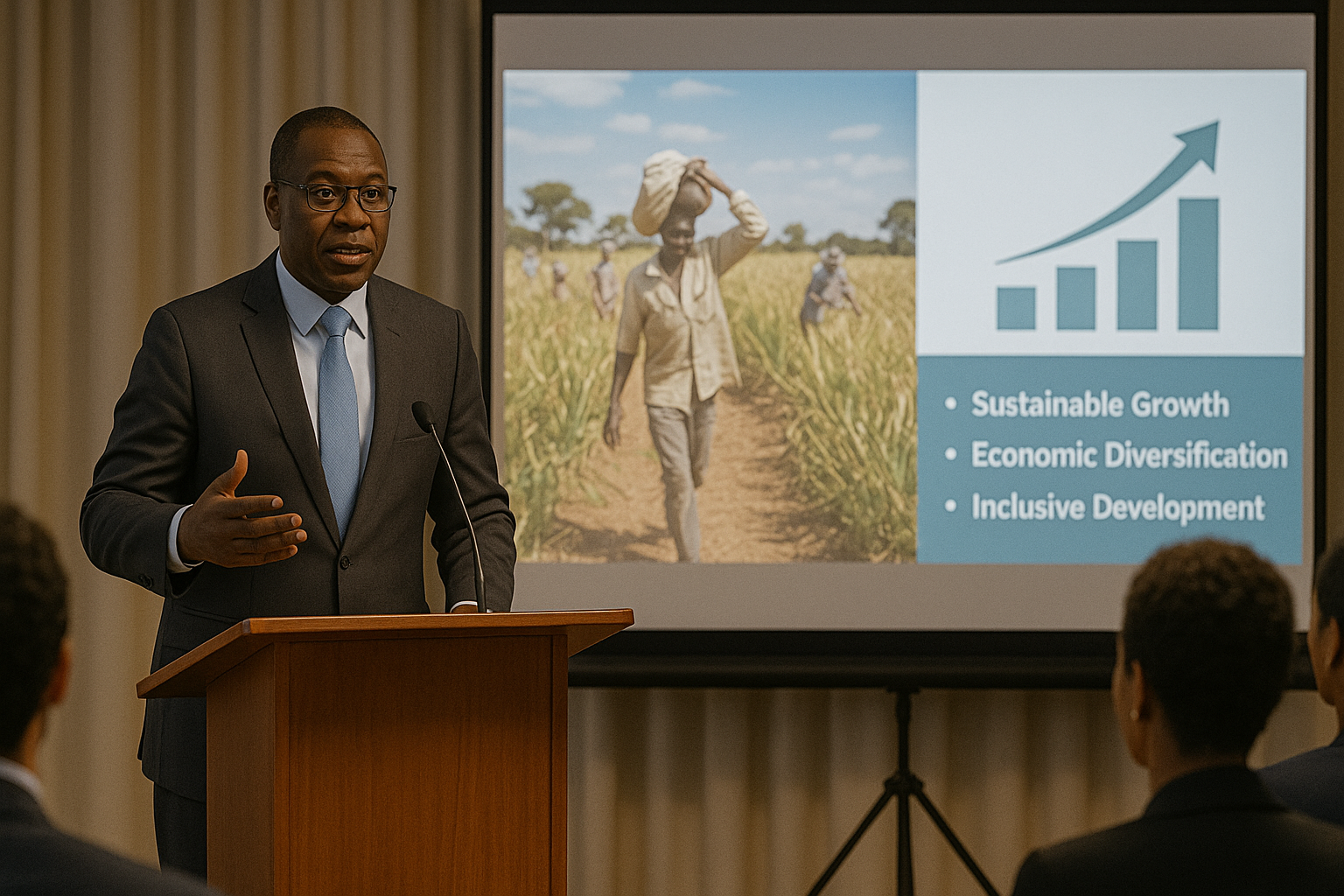From Diamonds to Diversification: Botswana’s Vision 2036 Financing Roadmap Unveiled
The Botswana Country Financing Framework 2025, developed by the Government of Botswana with the World Bank and UNDP, outlines strategies to diversify the economy beyond diamonds and close financing gaps through private investment and climate finance. It envisions a sustainable, inclusive growth model driven by innovation, green development, and strong institutional coordination.

The Botswana Country Financing Framework (CFF) 2025, developed by the Government of Botswana in collaboration with the World Bank Group and the United Nations Development Programme (UNDP), presents an ambitious roadmap for transforming the country's development financing landscape. The report explores how Botswana can mobilize and align domestic and international resources to achieve the goals of Vision 2036 and National Development Plan 12 (NDP 12). It blends economic analysis with fiscal strategy and institutional reform, offering a clear call to action: for Botswana to secure its future prosperity, it must move beyond dependence on diamonds and embrace innovation, private capital, and climate resilience as engines of growth.
A Stable Economy Facing Structural Shifts
For decades, Botswana has stood out as one of Africa's most stable and well-managed economies, but the CFF warns that its traditional model is reaching its limits. The country's reliance on diamond exports has generated wealth yet left the economy vulnerable to global market shifts. With mineral revenues declining and social pressures rising, the report argues that Botswana must now focus on diversification and inclusive growth. Vision 2036 provides the strategic anchor for this shift, emphasizing four key pillars: sustainable economic development, human and social capital, good governance, and environmental stewardship. The report notes that Botswana's strong fiscal discipline and moderate debt levels remain vital strengths, but it stresses that new and innovative sources of financing are essential to sustain growth in the years ahead.
Macroeconomic Trends and Fiscal Realities
The CFF paints a mixed picture of Botswana's fiscal landscape. Economic recovery after the pandemic has been driven by diamond exports and government spending, yet the volatility of global demand continues to strain revenues. A chart in the report shows that more than 30 percent of government revenue still comes from the mineral sector, while a large share relies on the Southern African Customs Union (SACU) transfers. This dependence exposes the budget to external shocks and threatens fiscal stability. To address this, the report recommends expanding the tax base, improving efficiency in public expenditure, and reforming state-owned enterprises to reduce fiscal pressure. Although public debt remains below 25 percent of GDP, the CFF cautions that the country's fiscal space is narrowing and that new financing strategies must be adopted to meet growing development needs.
Closing the Financing Gap through Blended Models
One of the central insights of the CFF is the scale of Botswana's development financing gap under NDP 12. The country requires billions of pula annually to meet targets in infrastructure, education, health, and climate adaptation. The largest shortfalls are found in the energy transition and climate resilience sectors. Since public funds alone cannot cover these needs, the report advocates for a blended financing approach that combines concessional loans, private investments, and domestic capital market instruments. Botswana's strong credit rating and institutional credibility position it well to attract private capital, but the report urges policymakers to accelerate financial reforms to make this possible. Pension funds and insurance companies, which hold vast domestic savings, could become key players in funding national priorities, especially through infrastructure bonds, green finance, and public-private partnerships (PPPs).
Harnessing Climate Finance for a Greener Future
The CFF highlights climate finance as a powerful lever for transformation. Though Botswana contributes minimally to global emissions, it faces severe climate risks, especially water scarcity, drought, and ecosystem stress. The report lays out a framework for mobilizing green investments in renewable energy, sustainable agriculture, and biodiversity protection. A diagram in the document illustrates a proposed national climate finance architecture that integrates public funds, donor contributions, and private capital through mechanisms like green bonds and blended finance facilities. Partnerships with the Green Climate Fund and the African Development Bank are identified as crucial to unlocking concessional climate financing. This green pivot, the report asserts, can turn environmental challenges into opportunities for innovation and job creation.
Building Stronger Institutions and Partnerships
Institutional coordination and governance emerge as key priorities. The report notes that fragmented decision-making and overlapping mandates often weaken development outcomes. To address this, it proposes the creation of a National Development Finance Council to harmonize financing strategies across ministries, development banks, and international partners. Improved data systems, transparent reporting, and a stronger pipeline of bankable projects are also emphasized as essential tools for attracting investors. On the global stage, Botswana is encouraged to deepen cooperation with the World Bank, IMF, and bilateral donors while leveraging regional integration through the African Continental Free Trade Area (AfCFTA) to expand trade and investment opportunities.
In its conclusion, the Botswana Country Financing Framework 2025 strikes an optimistic yet realistic tone. Botswana's stable governance, fiscal prudence, and institutional strength provide a solid foundation for transformation, but the window for reform is narrow. To achieve Vision 2036, the country must shift from a state-led model to one that empowers the private sector, embraces blended finance, and embeds climate resilience into every facet of policy. The CFF thus stands as both a technical strategy and a vision statement, a call for bold leadership and financial innovation to secure Botswana's sustainable and inclusive future.
- FIRST PUBLISHED IN:
- Devdiscourse
ALSO READ
-
World Bank Backs Kerala's Health Revolution with $400M Boost
-
World Bank Boosts Kerala Health with $280M Loan
-
World Bank Approves $280M Program to Boost Kerala’s Health System and Elderly Care
-
World Bank Report Estimates $183M in Damages from Deadly Afghanistan Earthquake
-
World Bank Funds $280M Health Overhaul in Kerala









